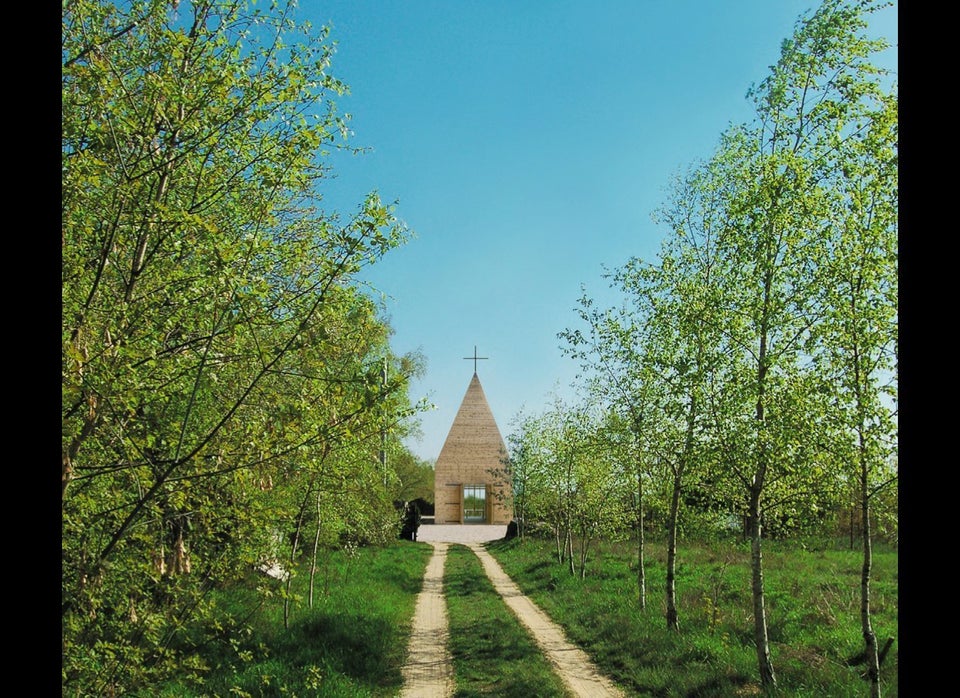By Lukas Feireiss, co-editor of 'Closer to God: Religious Architecture and Sacred Spaces' (Gestalten).
Architecture addresses and expresses. It touches and repels. It narrates and remains silent. It encloses and excludes. It is definitely permissible to speak of a language of architecture. The horizon of architecture covers a wide span across the history of mankind, from the basic housing afforded by the mud hut to the complex systems of cathedrals and skyscrapers. It would be naïve to suggest that this is a metaphorical way of speaking that could be avoided or even replaced.
No doubt, the formal repertoire of even the simplest building has a functional value and semantic quality that goes over and beyond it. It is therefore of no surprise that -- in particular, with buildings of religious designation - connotation and context are read as intelligible, tangible symbols of the content they embody. Reaching far beyond functional considerations, architecture's usual criteria of purpose -- access, capacity, construction technique and financial viability -- are simply not enough. More than any other type of construction, religious buildings seem to be essentially about the ideas they contain, and the abstract principles they materialize throughout the interplay of form and content. But apart from these narrative spatial values that cannot be accessed at first glance, religious buildings as bearer of meaning also demand in their spatial and artistic coherence the provision of social space as well.
The book Closer to God now brings together a unique selection of international examples of contemporary religious architecture of all faiths and denominations. Churches, synagogues and mosques of all sizes are collected here alongside Buddhist temples, wayside chapels and meditative places for quiet contemplation. What these buildings share is an avant-garde and often explicitly expressive formal language that shows an exciting relationship between traditionalism and a pioneering, future-oriented outlook. This focus on examples of architecturally progressive sacred buildings means that faiths which still cling firmly to traditional building styles and ideas–such as Islam and Hinduism, for example–do not feature very prominently in this book. It is all the more striking then to see how strongly architecture features as a vehicle for conveying ideas in Christianity and Judaism. The wide variety of stylistic approaches from all over the world presented here is vivid proof of the fact that 21st century sacred architecture is not dominated by a particular style.
In however diffuse and varied a form, the numerous examples of recently-built sacred buildings featured in the book Closer to God vividly illustrate the co-existence of traditional concepts and patterns hand in glove with modern principles, and novel approaches freed from the shackles of historicism in buildings of faith today. Despite their different, respective context and approach, all of these buildings not only thrive for the extraordinary and experimental, but are in their extroverted architectural stance also characterized by a deliberate spatial introversion, a distinguished sense of conscious retreat from the everyday into an innermost sanctum. Thereby their concepts are particularly ample in metaphors, usually unfolding an abundance of historical and thematic relationships in the fundamental formulation and development of the building's shape and narrative surplus.
Maybe the strength of contemporary sacred buildings a decade into the 21st century lies in their ability to allow the cracks and ruptures, contrasts and contradictions between the past and present co-exist. Offering us a level and a depth of contemplation that we cannot live without, and that we need to experience religion, the sacred building is still the image, the manifestation of a higher level of order and meaning. The building as a whole, its material form and individual elements, are a starting point for a journey of reflection that tries to exceed the visible to probe its intelligible basis.
